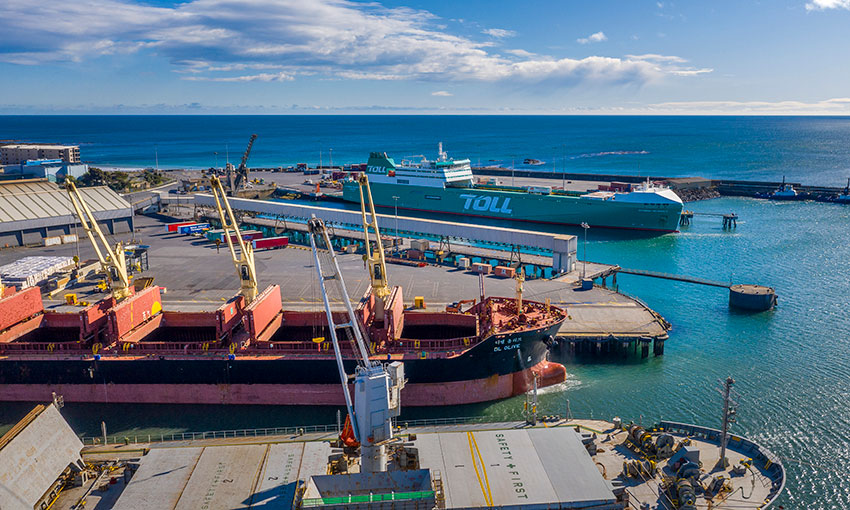THE 2021 edition of the Infrastructure Priority List identifies a $59 billion of projects, with six high priority projects, 17 priority projects, 48 high priority initiatives and 109 priority initiatives.
Infrastructure Australia has added a record number of new investment opportunities to the Infrastructure Priority List. It says these additions reflect the changing infrastructure needs of Australia’s cities, regions and remote communities in the wake of COVID-19.
Infrastructure Australia chief executive Romilly Madew said the list is a comprehensive overview of nationally-significant infrastructure needs and is an investment roadmap to guide Australia’s economic recovery and improve quality of life as the country continues to absorb the shocks of COVID-19.
“We have added a record 44 new proposals to the Priority List for consideration by Australia’s governments across the broad spectrum of transport, energy, water, waste, telecommunications and social infrastructure. Spanning all key infrastructure sectors and highlighting investment opportunities across Australia’s unique geographies, the 2021 Priority List reflects our changing infrastructure needs,” Ms Madew said.
“More than half of the investment opportunities on the 2021 Priority List benefit our regional communities, as we continue to draw focus on equitable service delivery and investments that will deliver affordable and quality infrastructure services for all Australians regardless of where they live.”
Port infrastructure in Tasmania
On the Apple Isle, there are two port capacity increases on the priority list.
One is an increase in capacity at the Port of Burnie. IA said the port could add additional berth and terminal capacity to support larger ships. Also, channel works could be carried out and other port infrastructure could be added.
And Hobart Port is also on the list for capacity improvements. Wharf improvements are recommended, as well as supporting infrastructure to increase exports.
TasPorts CEO Anthony Donald said the inclusion of two Tasmanian port infrastructure initiatives on the nationally significant list is reflective of the company’s commitment to future-proofing Tasmania’s multi-port system for the benefit of all Tasmanians.
“In 2018 we released our Port Master Plan – a co-ordinated, state-wide vision for the future of Tasmania’s multi-port system. Both the Port of Hobart and Port of Burnie were integral to this plan and the recognition by Infrastructure Australia in the 2021 Priority List is a significant step forward in realising both of these major initiatives,” Mr Donald said.
As part of the Port Master Plan, TasPorts committed to establishing a new Antarctic precinct and expanding Hobart’s cruise precinct to berth larger vessels at the Macquarie Wharf Precinct.
“The initiative identified at the Port of Hobart will further improve capacity and enable future growth in the tourism, trade and Antarctic sectors.”
Mr Donald noted that TasPorts vision for the Port of Burnie was announced in August 2020, with details released about the Burnie Export Gateway Initiative.
“The initiative will lay the foundation for exponential growth in Tasmanian mineral exports to global markets, enabling capacity for larger vessels to berth and ensuring fit-for-purpose terminal infrastructure,” Mr Donald said.
“It will bring significant benefits to Tasmania through the provision of essential port infrastructure that enables exponential growth in mineral exports to global markets over a 30-year horizon.”
New freight infrastructure initiatives
There are several new port and logistics infrastructure that have appeared on the list this year.
Among the new high priority initiatives is the Western Sydney Freight Line and Intermodal Terminal. This is about addressing high-capacity freight connections in western Sydney to reduce the growth of truck movements on the road network and reduce delays to freight trains on the main Western Line, where passenger trains have priority.
A new priority initiative is enabling infrastructure for hydrogen exports. A National Hydrogen Infrastructure is being co-ordinated by the Australian government to examine supply chain needs for such an industry; it is due to be delivered in 2022.
Another new priority initiative is improvements to the Melbourne-Adelaide freight rail line to enable double-stacked containers.
Rail access to Melbourne’s Webb Dock is another new priority initiative on the list. This rail connection would support container freight growth to Webb Dock, increase efficiency and reduce congestion on the surrounding road network.
Looking to the west, another new initiative on the priority list is the Australian Marine Complex infrastructure capacity at Henderson, Western Australia. This project could deliver new berths, new covered fabrication halls and upgraded ship-lift and transfer infrastructure to respond to strong growth in demand for shipbuilding vessel maintenance and infrastructure fabrication for the resource sector.
Government welcomes list
The federal government welcomed the release of the list, saying it showcased the government’s commitment to deliver nation-defining infrastructure while helping inform future investment priorities for all levels of government.
Infrastructure, transport and regional development minister Deputy Prime Minister Michael McCormack said the Priority List seamlessly couples with Australia’s infrastructure-led economic recovery from the COVID-19 pandemic.
“The Priority List drew on 124 new submissions received since the last edition’s release in August 2020, highlighting a $59-billion pipeline of investments for nationally significant priorities across a range of sectors including transport, energy, water, communications, housing and education,” he said.
“Corridor-focused improvements mean reduced travel times and improved freight productivity as this government continues to support priority projects like these, ensuring goods get to market and drivers get home sooner and safer.
“The Priority List helps inform future Australian government investments as we continue to deliver on our 10-year, $110 billion infrastructure plan which is laying the foundations for economic recovery following the COVID-19 pandemic.”
Infrastructure Australia is the government’s national infrastructure advisory body, with a key role in assessing business cases for major projects seeking Australian government funding and maintaining the Infrastructure Priority List to inform future government and private sector investment decisions.

